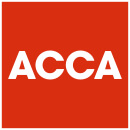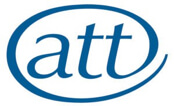APR & BPR changes: Why some farming businesses will now (re)explore a corporate structure
At our Annual Farming Families event in late February, I spoke in detail about the above topic.
Here’s a summary of the key reasons I highlighted for why this trend has already started and will, I believe, continue to be seen amongst agricultural businesses over the next few years.
1. Easier conversion to limited companies
Tax rules, including incorporation relief, have made it easier for businesses to transition from unincorporated to corporate structures. The Ramsey case in the first half of the 2010s was a turning point in this relief (potentially) also applying to rental assets, as well as farming ones.
2. Agricultural Property Relief
Agricultural Property Relief (APR) on farmhouses remains potentially applicable even if they are held outside of companies (supported by the Hanson tax case), but the upcoming change to introduce a £1M APR/BPR cap per person will reduce the value of APR in any case, making a corporate structure potentially less daunting for overall succession/Inheritance Tax planning.
3. Control
Companies offer more flexibility in control over decision-making (e.g., via different share classes), allowing for better management of control passing between generations.
4. Gifts With Reservation of Benefit
A corporate structure can offer tax advantages when gifting shares away and needing to be mindful of the Gifts With Reservation of Benefit (GWROB) rules. With partnerships, all profits must be allocated somewhere, meaning that securing the ‘right’ level of drawings for the older generation, whilst not wishing to unduly reward the next generation down and also attempting to avoid creating a GWROB issue all at once, is quite tricky. With a company, not all profits have to be declared as dividends.
5. Capital gains holdover relief
Businesses that pass the “80/20” test on their ratio of trading vs non-trading activities can benefit from a deferral relief on capital gains when shareholders are transferring shares in a company, which could be more advantageous than the “look through” approach to capital gains that applies when transferring partnership interests, particularly as minority valuation discounts can often be factored in.
6. Fragmentation of value
Companies can enable fragmentation of value by distributing shareholdings across family members or trusts, allowing for potential Inheritance Tax savings through minority discounts, although, of course, this needs careful planning and consideration to achieve the intended end result.
7. Sophisticated share structures
Companies can create different classes of shares, allowing business owners to manage value, control, and tax implications more effectively (e.g., using growth shares or preference shares with fixed dividends). This reason has led to a big uptick in wealthy individuals using ‘family investment companies’ (FICs). Family investment partnerships also exist and are similar but not as well embedded or understood.
8. Corporate tax rates are lower
The UK corporate tax system rewards reinvestment of profits, which can align well with the long-term asset-holding nature of farming businesses, offering tax advantages for retaining profits within a company/to reinvest into the business.
In summary, corporate structures will – as a result of these APR and BPR changes – become more attractive compared to partnerships due to the mix of business activities, the benefit of fragmenting value and how this will interact with the £1M cap (per person), and the way that a corporate structure can be used to balance control and management issues.
This article is from the latest edition of our Agricultural Briefing. To receive future copies of any of our newsletters directly to your inbox, please visit our preference centre to register your interest.
If you have any questions about the above, or would like more information specific to your circumstances, please enter your email address below and we will get in touch:
















